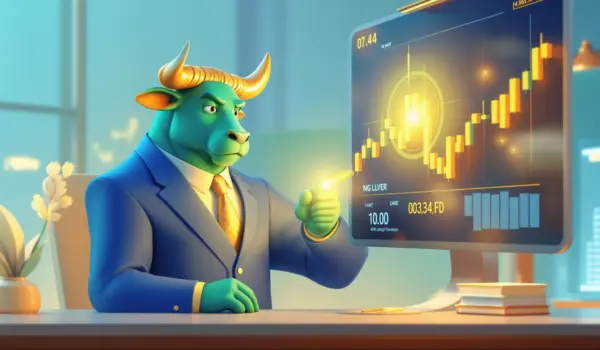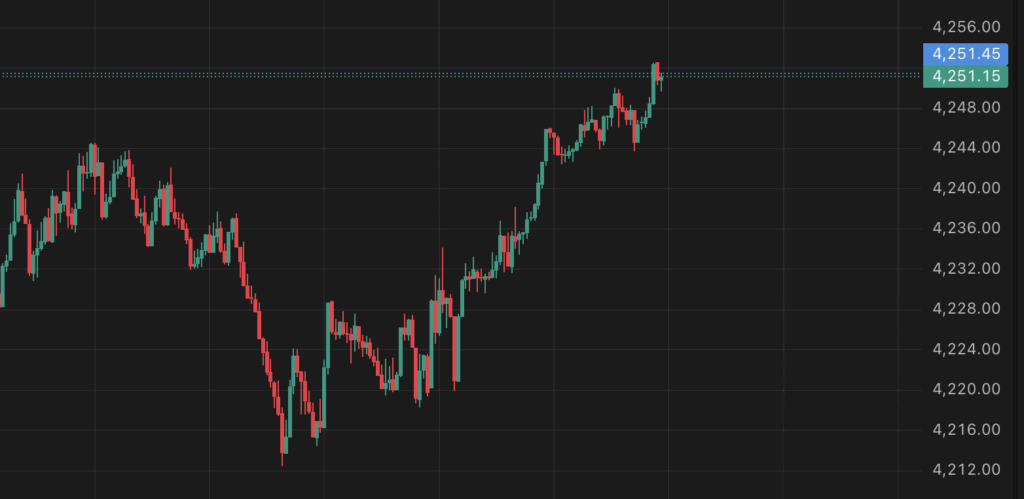PIP

Introduction to Pips
A pip is one of the most basic yet important concepts in trading, especially in the forex market. The word “pip” stands for percentage in point, and it represents the smallest unit of price movement in a currency pair. In most cases, one pip equals 0.0001 for major pairs — meaning if EUR/USD moves from 1.1000 to 1.1001, it has moved by one pip. It might sound small, but when you’re trading large volumes or using leverage, even a few pips can make a big difference in profit or loss.
Pips are how traders measure and discuss price changes. Instead of saying, “the euro went up by 0.0010,” traders simply say, “it went up by 10 pips.” This standardization makes communication clear and consistent across global markets. For some pairs like the Japanese yen, where prices are smaller, a pip equals 0.01 instead of 0.0001 — so understanding pip values helps traders calculate risk and potential profit accurately.
Knowing how to calculate pips is essential for planning trades. It helps you determine how much you’re risking on each trade and what your reward could be. Combined with lot size and leverage, pip value forms the foundation of proper risk management. In short, mastering pips means understanding how price movements translate directly into your account balance — a skill every trader needs to succeed.
What is a Pip?
A pip is a tiny measurement of price movement used in trading, especially in the forex market. The term stands for “percentage in point” or “price interest point”, and it represents the smallest standard change in the price of a currency pair. For most pairs, one pip equals 0.0001, which is the fourth decimal place. For example, if EUR/USD moves from 1.1050 to 1.1051, that’s a one-pip increase.

Pips are important because they give traders a consistent way to measure how much a market has moved, regardless of currency pair or price level. Instead of saying “the price went up by 0.0010,” traders simply say “the market moved 10 pips.” For currency pairs involving the Japanese yen, where prices are lower, one pip is 0.01 instead of 0.0001.
Understanding pips helps traders calculate profit, loss, and risk. Each pip has a specific monetary value depending on your lot size and the currency you’re trading. By knowing how much a single pip is worth, you can manage your positions wisely, set realistic targets, and avoid unnecessary risk. In short, a pip may be small — but it’s the foundation of every successful trading strategy.
Examples:
Let’s look at a few simple examples to understand how pips work in real trading situations.
Suppose you’re trading EUR/USD, and the price moves from 1.1000 to 1.1050. That’s a change of 0.0050, which equals 50 pips. If you bought one standard lot (100,000 units), each pip is worth about $10, meaning you made a $500 profit.
Now take USD/JPY, where one pip equals 0.01 instead of 0.0001. If the price goes from 145.20 to 145.80, that’s a 60-pip increase. For a standard lot, each pip is worth roughly $9.17, giving you about $550 in profit.
Finally, imagine you’re trading GBP/USD, and the price drops from 1.2550 to 1.2520. That’s a move of 30 pips against your position. If you were trading one standard lot, your loss would be $300.
These examples show how even small price movements can have a big impact when leverage is involved. Understanding pip values helps traders plan better — setting correct stop-loss levels, profit targets, and overall risk management for every trade.
Pipettes (Fractional Pips)
Pipettes, also known as fractional pips, are even smaller units of price movement than regular pips. While a pip is typically the fourth decimal place in most currency pairs, a pipette is the fifth decimal place, or one-tenth of a pip. For example, if EUR/USD moves from 1.10005 to 1.10015, that’s a change of one pipette, equal to 0.00010 or one-tenth of a pip.
Many modern brokers display prices using pipettes to offer more precise quotes. This higher level of accuracy allows traders, especially scalpers and algorithmic traders, to benefit from very small price changes. In fast-moving markets, even a few pipettes can make a difference in the timing and execution of a trade.
For pairs involving the Japanese yen, where prices are smaller, a pipette represents the third decimal place instead of the second. So, for USD/JPY, if the price moves from 145.203 to 145.213, that’s a one-pipette movement.
In short, pipettes give traders finer control and more accurate pricing. While they don’t drastically change how profits and losses are calculated, they reflect the growing precision in today’s electronic trading platforms — where every tiny movement counts.
Why Are Pips Important?
Pips are the foundation of how traders measure price movement and profit in the forex market. Without pips, it would be much harder to calculate gains, losses, or even discuss trades clearly. They turn small decimal movements into an easy, universal language that every trader understands. For instance, saying “the pair moved 20 pips” instantly communicates how much the market shifted, no matter what currency is being traded.
Here’s why pips are so important for traders:
- 1. Profit and Loss Calculation: Pips make it easy to measure how much money you’ve gained or lost on a trade. Knowing the pip value for your lot size helps you control risk precisely.
- 2. Risk Management: By setting stop-loss and take-profit levels in pips, you can define exactly how much you’re willing to risk per trade. This consistency is key to long-term success.
- 3. Comparing Volatility: Pips help you identify how active or volatile a market is. A pair that moves 100 pips a day offers more trading opportunities — but also more risk — than one that moves only 20.
- 4. Strategy Planning: Most trading systems, from scalping to swing trading, are based on pip movements. They help you backtest and optimize your strategy with measurable data.
In short, pips keep trading logical, measurable, and consistent. They may seem small, but without them, there would be no clear way to track performance, manage risk, or even speak the same language as other traders.
How to Calculate the Value of a Pip
The value of a pip isn’t fixed — it changes depending on a few key factors that every trader should understand. These include the currency pair you’re trading, your trade size (lot size), and the base currency of your trading account. Together, these elements determine how much one pip is actually worth in monetary terms.
Here’s how each factor affects pip value:
- Currency Pair: Different pairs have different pip values because of their exchange rates. For example, one pip in EUR/USD might be worth $10 per standard lot, while in USD/JPY it could be around $9.17.
- Lot Size: The larger your position, the more each pip is worth. A standard lot (100,000 units) has a higher pip value than a mini lot (10,000 units) or a micro lot (1,000 units).
- Account Currency: If your account is in USD, the pip value will differ depending on whether the U.S. dollar is the base or quote currency in the pair you’re trading.
Understanding pip value helps traders calculate their potential profits and losses before opening a position. It’s a vital part of risk management — ensuring you know exactly how much you’re risking per trade and how much each pip movement means for your balance.
Standard Pip Value Examples:
Here are some standard pip value examples to help you see how much a single pip is worth in different trading situations:
- EUR/USD: In a standard lot (100,000 units), one pip equals $10. For a mini lot (10,000 units), one pip equals $1, and for a micro lot (1,000 units), it’s $0.10.
- GBP/USD: Similar to EUR/USD, a standard lot pip is worth $10, a mini lot $1, and a micro lot $0.10.
- USD/JPY: Because this pair is quoted differently, one pip (0.01) equals about $9.17 per standard lot, $0.917 per mini lot, and $0.0917 per micro lot.
- USD/CHF: Here, one pip is worth approximately $10.27 per standard lot, $1.03 per mini lot, and $0.10 per micro lot — depending on the current exchange rate.
These examples show how pip values change slightly based on currency pair and trade size. Knowing these numbers helps traders manage their risk more effectively. Before entering a trade, it’s always smart to calculate the pip value for your position size — that way, you know exactly how much each pip movement will affect your profit or loss.
Pips vs Points vs Ticks
In trading, pips, points, and ticks all measure price movement — but they’re used in different markets and represent different levels of precision. Understanding how they differ helps traders communicate clearly and calculate profits accurately.
Here’s a quick breakdown:
- Pips: Commonly used in the forex market, a pip (percentage in point) is usually the fourth decimal place in most currency pairs, or 0.0001. For pairs with the Japanese yen, a pip equals 0.01.
- Points: A point generally represents the smallest price unit in stocks or indices. For example, if the S&P 500 index moves from 4800 to 4805, that’s a 5-point move. Each point can have a specific dollar value depending on the instrument.
- Ticks: A tick is the smallest possible price change allowed by an exchange for a particular asset — often used in futures and commodities trading. For instance, in crude oil futures, one tick equals $0.01 per barrel, or $10 per contract.
In simple terms, pips, points, and ticks all describe how far a price has moved — just in different ways depending on the market.
- Forex → Pips
- Stocks/Indices → Points
- Futures/Commodities → Ticks
Knowing which unit applies to your market helps you calculate profit, risk, and volatility correctly — and keeps your trading language sharp and professional.
Using Pips in Risk Management
Using pips in risk management helps traders measure and control how much they’re willing to lose on a trade before entering it. Since pips represent precise price movements, they make it easy to set stop-loss and take-profit levels that align with your strategy. For example, if you decide to risk 30 pips per trade, you can calculate your position size so that a 30-pip loss equals only 2% (or any chosen amount) of your account balance.
Here’s how pips fit into smart risk management:
- 1. Define Risk per Trade: Decide how many pips you’re willing to risk based on your account size and risk tolerance.
- 2. Calculate Position Size: Use pip value to determine how large your position should be. The goal is to make sure that if your stop-loss (say, 30 pips) hits, you only lose your planned percentage of capital.
- 3. Set Stop-Loss and Take-Profit Levels: Placing these in pip distances helps keep trades consistent — for instance, risking 30 pips to gain 60 pips (a 1:2 risk/reward ratio).
- 4. Track Performance in Pips: Measuring wins and losses in pips instead of money helps evaluate your strategy objectively, regardless of account size.
In short, pips turn risk management into a numbers game — clear, consistent, and emotion-free. By focusing on pips instead of dollar amounts, traders make more logical decisions and keep their trading plans steady over time.
Conclusion
Pips may seem like a small detail in trading, but they play a huge role in how traders measure progress, calculate profits, and control risk. They turn complex price changes into a simple, universal language that works across all markets and platforms. Whether you’re tracking your gains, setting stop-loss levels, or analyzing volatility, pips give structure and clarity to every decision you make.
By understanding how pips work — and using them to plan trades logically — you gain more control over your strategy. Instead of reacting emotionally to price swings, you can think in numbers, probabilities, and consistent goals. In the end, mastering pips isn’t just about knowing how price moves — it’s about learning how to trade smarter, manage risk better, and grow your account with confidence.

